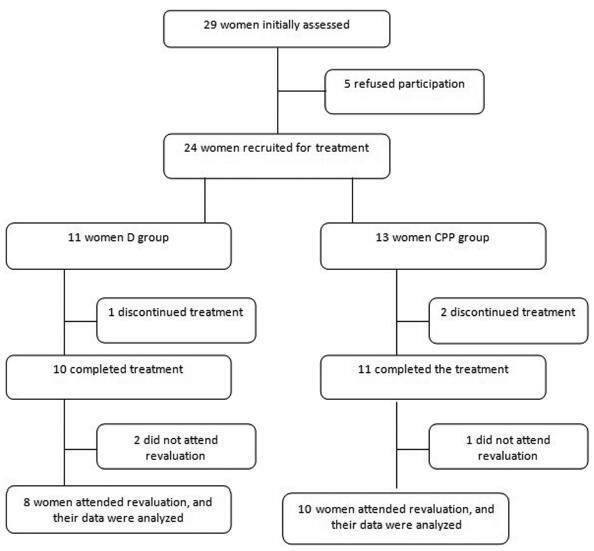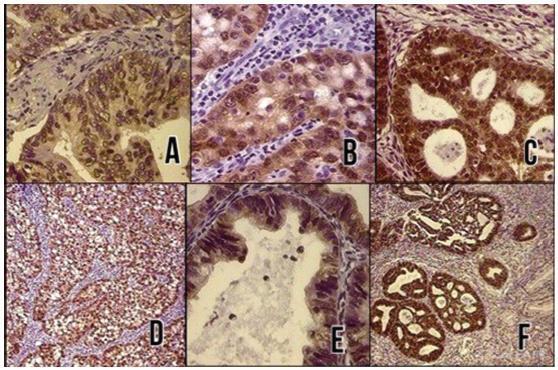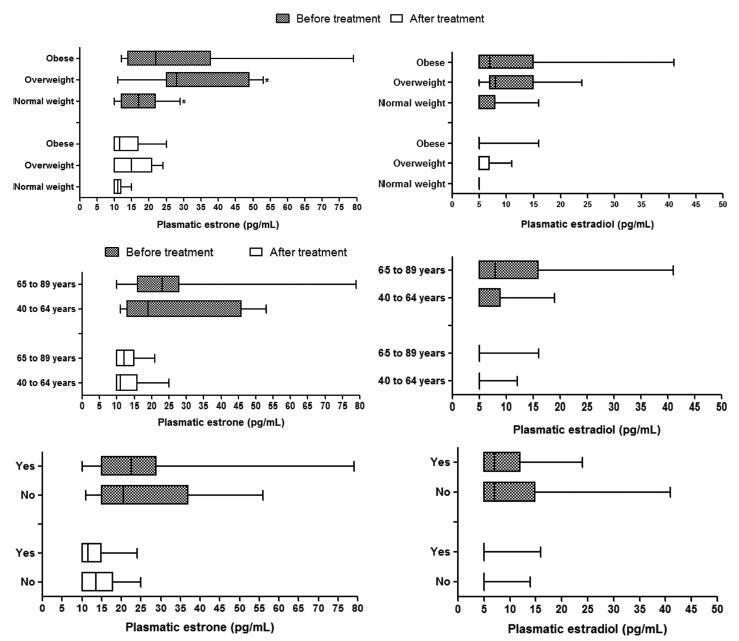Summary
Revista Brasileira de Ginecologia e Obstetrícia. 2017;39(5):209-216
In 2013, it was estimated that 289,000 maternal deaths occurred worldwide. The maternal mortality ratio has decreased in many countries in the past decades, due to early identification and treatment of obstetric complications, despite the dissimilarities observed in diverse locations and populations. Black women, for instance, have always been more susceptible to the occurrence of maternal mortality and severe morbidity. Therefore, the objective of this study is to assess skin color as a predictive factor for maternal near miss (MNM) in a sample of Brazilian women interviewed in the Brazilian National Demographic and Health Survey (DHS) of 2006.
A secondary analysis of the DHS database, a population-based crosssectional nationally representative study was conducted. This database is of public domain. The risk of maternal complications according to ethnic group and the associated sociodemographic characteristics were evaluated. For the data analysis, the odds ratios and respective 95% confidence intervals were calculated.
In the sample interviewed, 59% of women were black or brown (mixed-race). Approximately 23% of women had some complication, and 2% of these women had at least one MNM pragmatic criterion. The MNM rate was 31 per 1,000 live births, and its occurrence was not statistically different among the ethnic groups. The only factors identified that were considered to be associated with the occurrence of MNM were maternal age above 40 and women not currently attending school, but only among white women.
The 2006 DHS results did not show a higher occurrence of maternal complications, and specifically of MNM associated with black/brown skin color.
Summary
Revista Brasileira de Ginecologia e Obstetrícia. 2017;39(5):202-208
To evaluate the perception of health professionals involved in the labor process and theassistanceto normal delivery, comparing two hospitals in the cityof Goiânia, Brazil, regarding the perception of theseprofessionals when they are performing the routines and practices recommended by the World Health Organization (WHO).
This is an analytical comparative study with a quantitative approach, performed in two public hospitals in the city of Goiânia, in the state of Goiás, Brazil. The study included 86 professionals working in assistance to immediate labor in two hospitals. A questionnaire containing 40 questions was applied. The questionnaire related to the Program for the Humanization of Prenatal and Childbirth Care (PHPN, in the Portuguese acronym) of the Brazilian Ministry of Health, the presence of a companion, and the procedures performed. For the data analysis, we used the chisquare and Fisher’s exact tests.
Most of the professionals claimed to know about the PHPN proposed by Brazilian Ministry of Health in the two hospitals. With regard to good practices, most professionals said that they are performed in maternity ward 2, while on maternity 1, although many of them are present, there are still many unnecessary interventions.
When comparing the two maternity hospitals, maternity 2, which was created as a routine humanization model, manages to better adhere to the WHO recommendations. In maternity 1, there was a series of interventions considered by the WHO as ineffective, or used in an inappropriate manner.
Summary
Revista Brasileira de Ginecologia e Obstetrícia. 2017;39(1):26-30
To evaluate the long-term effectiveness of perineal Thiele massage in the treatment of women with dyspareunia caused by tenderness of the pelvic floor muscles.
A total of 18 women with diagnoses of dyspareunia caused by tenderness of the pelvic floor muscles were included in the study. The women were divided in two groups: the dyspareunia (D) group - 8 women with dyspareunia caused by tenderness of the pelvic floor muscles; and the chronic pelvic pain group (CPP) group - 10 women with dyspareunia caused by tenderness of the pelvic floor muscles associated with CPP. Each patient filled out the Visual Analogue Scale (VAS), the McGill Pain Index, the Female Sexual Function Index (FSFI) and the Hospital Anxiety and Depression Scale (HADS). After an evaluation, the women underwent transvaginal massage using the Thiele technique over a period of 5 minutes, once a week for 4 weeks.
All women had significant improvements in their dyspareunia according the VAS and the McGill Pain Index (p < 0,001), but the HADS scores did not show significant differences. Regarding sexual function, the D group showed improvements on all aspects of sexual function, while the CPP group showed differences only in the pain domain.
Thiele massage is effective in the treatment of dyspareunia caused by tenderness of the pelvic floor muscles with a long-term pain relief.

Summary
Revista Brasileira de Ginecologia e Obstetrícia. 2017;39(1):21-25
To evaluate the diagnostic utility of the p16ink4a protein expression as a marker for adenocarcinoma of the cervix.
In a cross-sectional study, p16ink4a expression was evaluated in 30 cervical biopsies from patients diagnosed with invasive adenocarcinoma from 2 reference clinics in Brazil, and compared with 18 biopsies of endocervical polyps (control cases). The performance of the tests for p16ink4a was evaluated using a conventional contingency table, and the Kappa (k) index was used to evaluate the agreement of the marker with the tissue diagnosis.
In total, 66% of the invasive adenocarcinoma cases were positive for p16ink4a. All of the adenomatous polyps cases used as negative controls were shown to be negative for p16ink4a. The marker showed a high sensitivity and a high negative predictive value. The Kappa index was good for p16ink4a (k 1/4 0.6).
Considering the strong association between the p16ink4a marker and the cervical adenocarcinoma, its use represents an important tool for reducing incorrect diagnoses of adenocarcinoma and thereby avoiding overtreatment.

Summary
Revista Brasileira de Ginecologia e Obstetrícia. 2017;39(1):9-13
To evaluate the prevalence of hypertrophic cardiomyopathy (HCM) in fetuses of pregnant women with gestational diabetes mellitus (GDM) in the beginning of the treatment.
A cross-sectional study was performed between July 1, 2013, and Decem-ber 20, 2013, in a public maternity clinic in southern Brazil. The subjects were 63 fetuses of mothers with gestational diabetes, with a single pregnancy and no other associated pathologies. We diagnosed HCM through a fetal echocardiography before treatment and evaluated the maternal and fetal characteristics.
The average age of the pregnant women was 32.32 (±6.2) years, and the average gestational age at the time of the evaluation was 30.59 (±2.27) weeks. The interventricular septum thickness showed a standard deviation of more than two in 50.8% of the fetuses (95% confidence interval [95%CI]: 38.1-63.5%). The left ventricular wall thickness showed a standard deviation of more than 2 in 13 (20.6%) fetuses (95%CI: 11.1-30.2%). The HCM was confirmed in 54% of the fetuses (95%CI: 41.3-65.1%). The fetal abdominal circumference was normal in 46 (73%) fetuses, and 50% of these fetuses had HCM.
The prevalence of hypertrophic cardiomyopathy in fetuses of pregnant women with GDM before treatment was of 54% (95%CI: 41.3-65.1%).
Summary
Revista Brasileira de Ginecologia e Obstetrícia. 2017;39(1):4-8
This study aims to give information about the relationship between different types of factor deficiencies and maternal/obstetric outcomes.
We retrospectively reviewed the medical records of eight women with factor deficiency disorders. The demographic and clinical features of the patients after their last pregnancies were registered retrospectively.
There were 29 pregnancies among the 8 patients. The spontaneous abortion rate was relatively high in two patients with factor XIII deficiency (80% and 57.1%) compared with the other factor deficiency groups. There were 16 births, which included 1 set of twins, and 2 deaths (1 stillbirth and 1 postpartum exitus occurred in the same patient). Intrauterine growth restriction was noted in five cases; four of these occurred in factor X deficiency cases. The mean decrease in hemoglobin level of all patients after birth was 1.7 g/dL (range, 0.2-3.6 g/dL). Red blood cell transfusion was required only in one case of factor XIII deficiency.
There is currently no consensus on the pregnancy management of women with factor deficiencies because of the limited knowledge due to the rarity of such disorders. Labor should be managed in a dedicated unit with a team consisting of an obstetrician, a hematologist, an anesthesiologist, a midwife, and a pediatrician to minimalize the complications.
Summary
Revista Brasileira de Ginecologia e Obstetrícia. 2017;39(1):14-20
Obesity is associated with an increased risk for breast cancer. Recent studies have shown that aromatase inhibitors may be less effective in women with a high body mass index (BMI). The aim of this study was to establish the relationship between the BMI and plasma estrone and estradiol levels in postmenopausal women with hormone receptor-positive breast cancer using anastrozole.
In this cohort study, the patients were divided into three groups according to BMI (normal weight, overweight and obese) to compare and correlate plasma hormone levels before starting anastrozole hormone therapy and three months after treatment. Plasma hormone levels were compared for age and use of chemotherapy.
A statistically significant reduction in estrone and estradiol levels was observed between baseline and three months after starting the anastrozole treatment (p < 0.05). There was no statistically significant difference in plasma estrone and estradiol levels among the BMI groups (p > 0.05), but a significant reduction in plasma estrone levels was observed after three-months' treatment relative to baseline in all groups, as well as a reduction in estradiol in the obese group (p < 0.05). The use of chemotherapy and age > 65 years had no influence on plasma steroid levels.
Changes in estrone and estradiol levels in the studied groups were not associated with BMI, chemotherapy or age.

Summary
Revista Brasileira de Ginecologia e Obstetrícia. 2016;38(11):559-563
To identify pregnancy as a causative factor of sexual dysfunction among expectant women.
A prospective study with 225 expectant mothers seen in the prenatal clinic of a federal university. Sexual function was evaluated by means of the Female Sexual Function Index (FSFI), and all domains were analyzed (desire, arousal, lubrication, orgasm, satisfaction, and pain). Initially, a univariate analysis of the sample was done. The averages for each domain according to the risk of sexual dysfunction (FSFI ≤ 26.5) were compared using the Student’s t-test for independent samples. The strength of the correlation between sexual dysfunction and all sociodemographic, clinical and behavioral variables was measured by the Chi-Square (X2) test. Then, odds ratios (ORs) and their confidence intervals were assigned to perform a bivariate analysis. Any p values less than 0.05 were considered significant.
Approximately two-thirds of the women (66.7%) showed signs of risk of sexual dysfunction (FSFI ≤ 26.5). Within these cases, all sexual dysfunction domains (desire, arousal, lubrication, orgasm, satisfaction, and pain) were found to be statistically significant (p < 0.001). The domains most affected were desire (2.67), satisfaction (2.71) and arousal (2.78).
Pregnancy appears to be an important causative factor of sexual dysfunction among pregnant women.